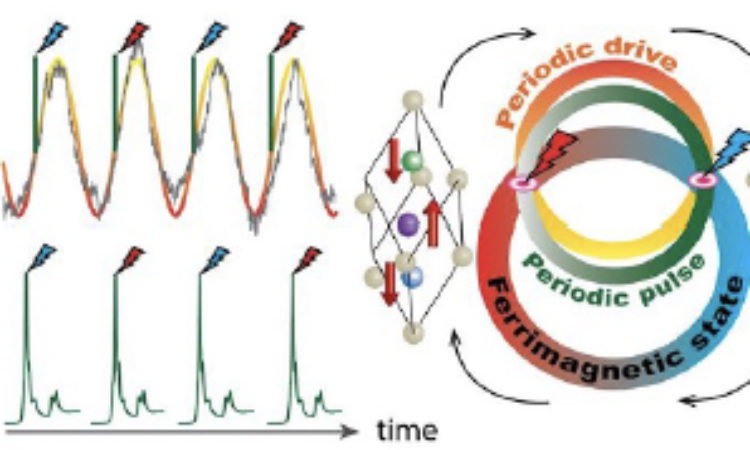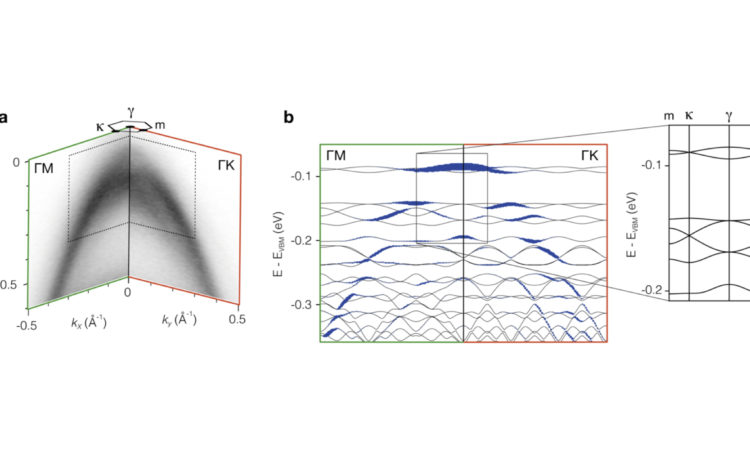Elastic properties measured by thermal diffuse x-ray scattering
Physicists from the University of Geneva and the European Synchrotron discovered how to obtain the full elasticity tensor from a single crystal diffraction experiment. Measurements of thermal diffuse scattering revealed that the complete set of elastic constants can be determined to high precision. The new approach allows the measurement of elastic properties together with the crystal structure in the same experiment and offers the opportunity to study tiny single crystals regardless of shape, symmetry and optical properties.

By Björn Wehinger, Department of Quantum Matter Physics, University of Geneva
Based on article published in Physical Review Letters
Elastic constants define important mechanical properties and are the fundamental quantity in the description of elastic waves in crystalline materials. Accurate measurements of the elasticity tensor – which contains the full set of elastic constants – are of principal interest for the description of seismological waves and their discontinuities, which allow for decisive conclusions on composition, temperature and pressure of Earth’s interior. In condensed matter physics, elastic properties are important in the study of quantum phase transitions in systems with pronounced interaction of phonons with other quasi-particles. Such interaction may include electron-phonon coupling important for superconductors as well as spin-phonon coupling which leads to exciting new physics in low dimensional spin systems.

The two most commonly used experimental techniques to determine the elastic tensor are ultrasound measurements and Brillouin scattering. While the former has strong limitations on small crystals and experiments under extreme conditions, the latter is difficult for opaque materials. Alternatively, information on the elasticity tensor can be obtained from scattering experiments. We now showed, that the full elasticity tensor can be determined by high-precision measurements of thermal diffuse scattering from a single crystal.
Thermal diffuse scattering arises from the vibrations of atoms around their equilibrium positions. In a scattering experiment such vibrations result in intensities in-between Bragg reflections and are the fingerprints of the lattice dynamics. In the vicinity of Bragg reflections, the scattering intensities are dominated by acoustic phonons that correspond to
elastic waves. These waves propagate with the speed of sound that can take different values depending on the composition, the crystal symmetry, direction and external influences such as temperature and pressure. The full information is given by the elasticity tensor which in turn can be extracted by a careful analysis of the scattering intensities.
High-quality single crystals of magnesium oxide and calcite are investigated as benchmark systems. The experimental setup is illustrated in Figure 1.
Monochromatic X-rays are scattered from the single crystals and scattering intensities collected by a noise-free pixel detector. Measurements were performed at beamlines ID29 and BM01 at the European Synchrotron. The sample is rotated with small angular steps of only 0.1 degrees with exposure times adapted to the weak diffuse scattering. Measurements are taken at various temperatures. Detailed information on the experimental setup and the underlying theory can be found elsewhere [1,2].

Experimental scattering intensities for calcite are compared to the fit in Figure 2. An excellent agreement of experimental and calculated scattering intensities can be appreciated. Remarkably, the obtained elastic constants agree within about 1% with values determined by ultrasound measurements.
Absolute values of the elastic constants can be obtained if measurements are taken at slightly different temperatures. This strategy further allows a separation of inelastic from elastic scattering that may arise from disorder or imperfect surfaces. This is shown for magnesium oxide for which accurate values in absolute units are obtained by fitting scattering intensities in the vicinity of 78 Bragg reflections at two slightly different temperatures.
The new method is model-free and can be applied to very small and opaque crystals of arbitrary shape and symmetry. This implies a broad applicability in material science, geophysics and in the study of sound wave anomalies due to fundamental interactions in condensed matter physics. It is possible to measure the elastic properties together with the crystal structure in the same experiment. This is a great benefit for measurements at extreme conditions, such as high pressures, where it is often difficult to reproduce the exact experimental conditions.
[1] B. Wehinger, PhD thesis, Université de Grenoble (2013), http://tel.archives-ouvertes.fr/tel-00961602
[2] A. Bosak et al., Journal of Physics. D, Applied Physics 48(50), 50400 (2015) http://dx.doi.org/10.1088/0022-3727/48/50/504003
Contact: Björn Wehinger, (Tel. +41 22 379 63 65)



